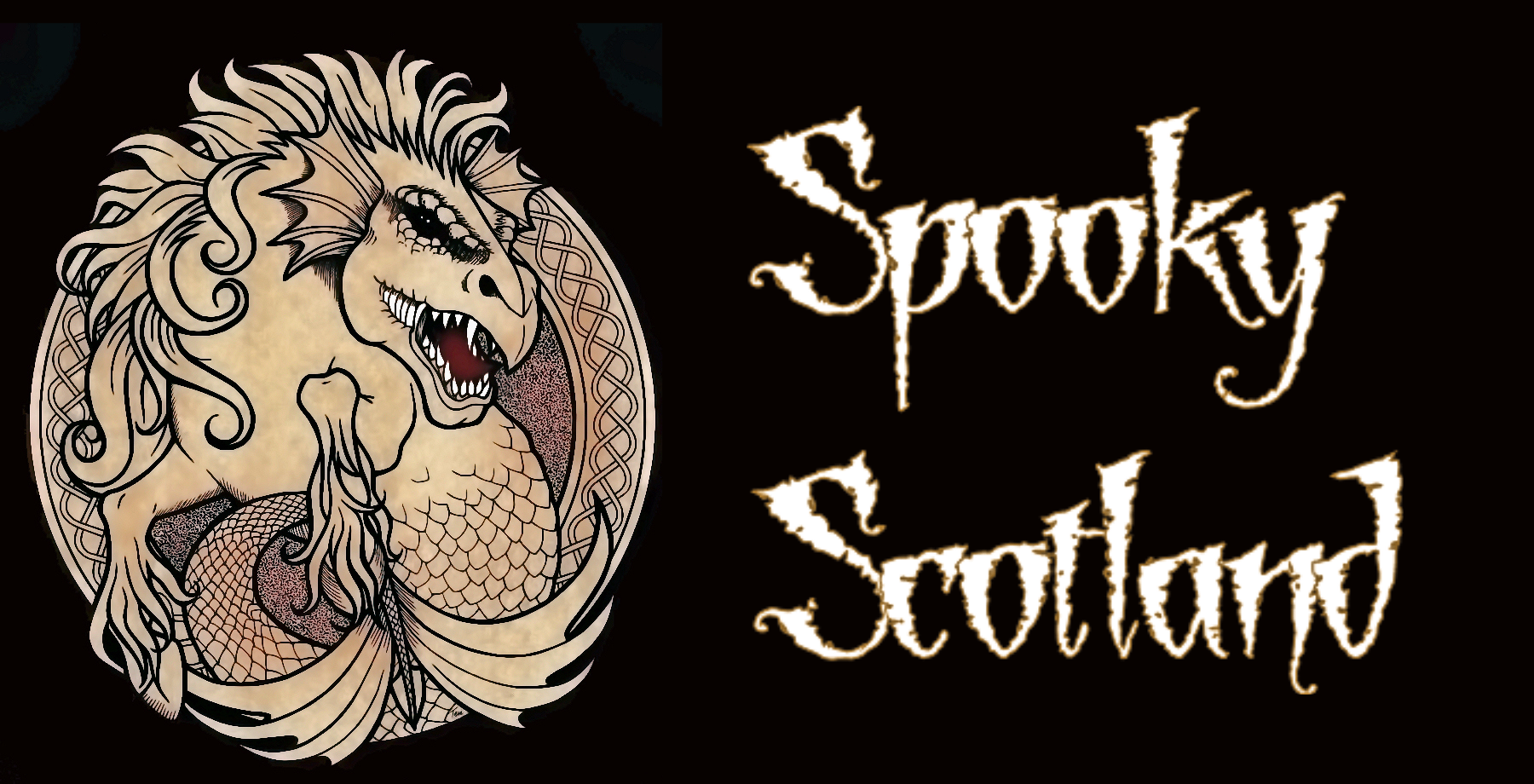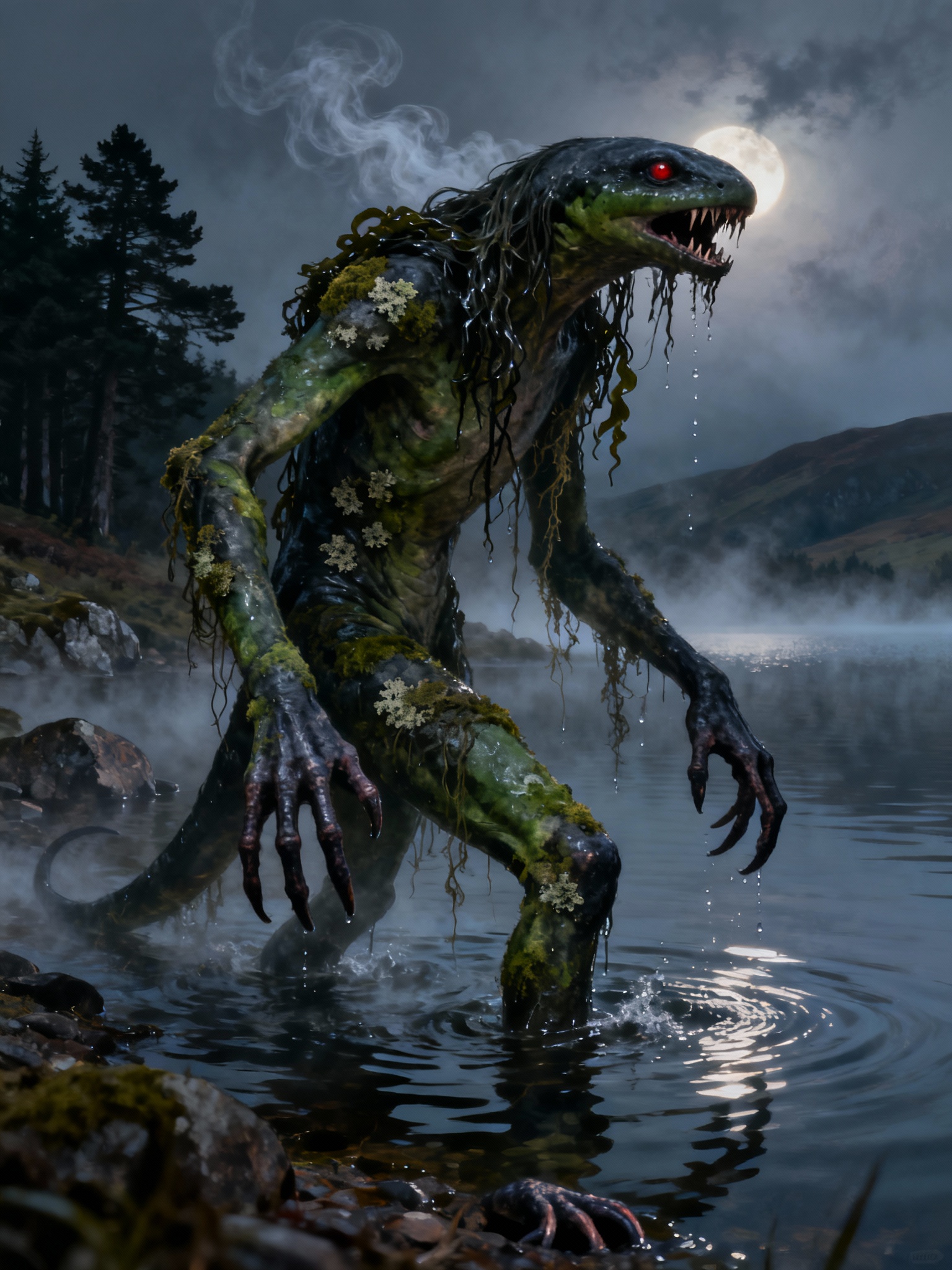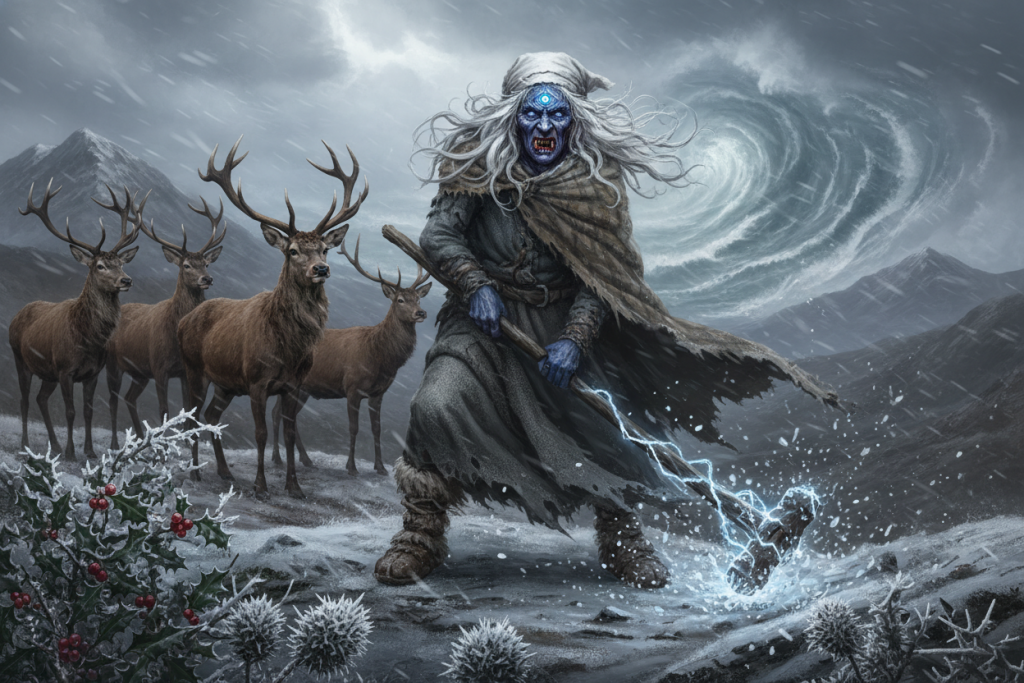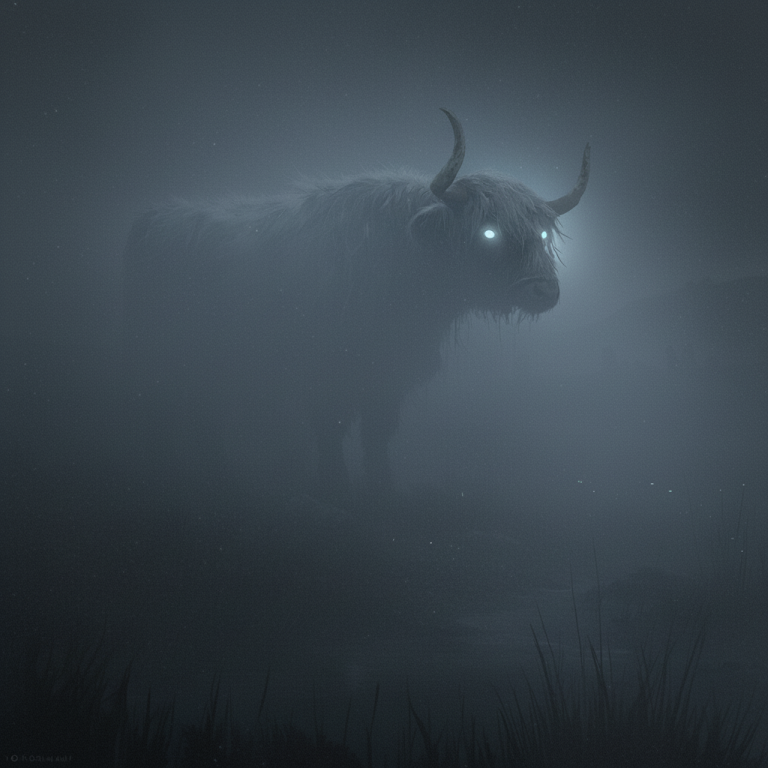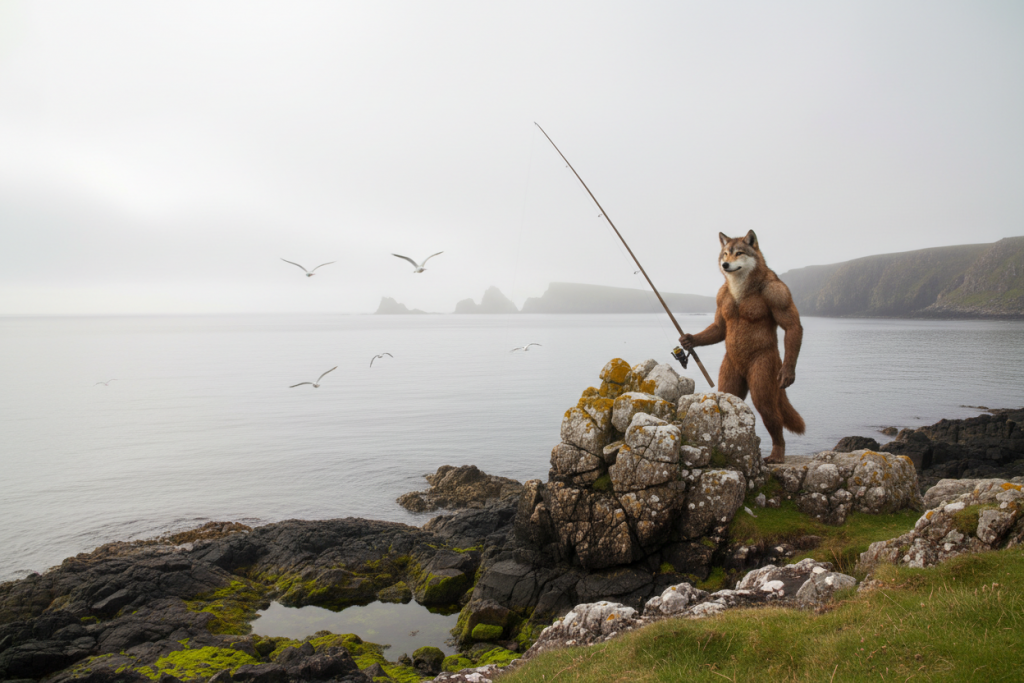Name pronunciation:
Voo-a (Scottish Gaelic: [fuə])
Plural: Fuathan
General Information:
The Fuath is a class of malevolent spirits in Highland folklore, known to haunt rivers, lochs, and the sea. They are most feared as the embodiment of hatred (their name means hate incarnate), appearing to lure, drown, or torment mortals. While usually associated with water, John Gregorson Campbell noted that Fuathan can also include land spectres and goblins.
Collected accounts by J. F. Campbell, Donald Mackenzie, and Charlotte Dempster place the Fuath among the broadest class of Highland monsters, a category that sometimes shades into kelpies, nuckelavee, and other water-faeries.
Appearance:
- Often depicted as a female figure in green (or gold) silk, with long yellow hair.
- Sometimes grotesque, such as the “nose-less banshee” of Sutherland.
- Others bore animalistic traits like webbed feet, or when subdued, collapsing into a jelly-like substance.
- Some appear beast-like, moss-draped, clawed and reptilian.
Habitat:
- Scottish Highlands, especially Sutherland.
- Associated with Loch Migdale, Moulin na Vaugha mill, River Shin, and Skibo Castle estate (Dempster lands).
- Found in streams, lochs, rivers, sea inlets, and remote watery places.
Behaviour:
- Malicious, embodying hatred and evil intent.
- Lure humans to water, drown livestock, or inspire terror.
- Fear of steel: most vulnerable to awls and sewing needles.
- Able to cohabit with humans — sometimes marrying mortals — after which their offspring bore monstrous traits.
- Animals sense them first: dogs especially barked and whined, warning humans.
Shape-shifting Ability:
- Fluid form, ranging from beautiful women to monstrous, moss‑covered beasts.
- Some appear starving or wounded to gain pity.
- Often collapse into shapeless jelly when exposed to firelight or struck with steel.
Variant:
- The Brollachan (the Fuath’s son): a shapeless, blob-like form with mouth and glowing eyes.
- Known for only saying “Myself” and “Yourself.”
- Tried to possess animals and humans, leaving them frenzied and drained of life.
- Broader Fuath kin: Beithir, Ùruisg, Fideal, Shellycoat, Nuckelavee.
Location in Scotland:
- Moulin na Vaugha (Mill of the Fuath), Loch Migdale.
- River Shin (gold-clad Fuath woman sighting).
- Skibo Castle estate, Dempster family lands.
- Across Highland waters and bogs.
Stories / Sightings or Experiences:
1. The Capture at Moulin na Vaugha
The most famous Fuath story comes from a wager at the Dempster family’s mill in Sutherland. A man of Inveran bet he could capture the Fuath of the mill, thought to be a kelpie or Fuath.
He rode out by night with a black-muzzled dog. Sure enough, the creature awaited him — a terrible figure, part woman, part banshee.
With the aid of his hound, he dragged the Fuath to his second horse and bound her fast.
But at the ford south of Loch Migdale, the thing became enraged, thrashing with unnatural strength. The man struck it – first with an awl, but this had no effect, then with a sewing needle. The Fuath shrieked that “the needle bites worse!” confirming steel and small iron as its poison.
At last, he drove it home, only for witnesses to shine light upon it. The Fuath instantly collapsed into a trembling, jelly-like heap — shapeless and unworldly.
Folklore likened its body to the “fallen stars” sometimes found in the Highlands — the mysterious star jelly, reported since the Middle Ages.
2. The Nose-less Banshee
At the Mill of Loch Migdale, locals spoke of a woman with long yellow hair, clad in silk green — but with no nose. This ghastly figure exemplifies the hideous glamour-breaking truth beneath the Fuath’s deception.
3. The Web-footed Kelpie
A shepherd once aided a lame woman who begged for a lift on his back. But glimpsing her uncloaked feet — webbed like those of a beast — he knew her for a Fuath. He cast her off, escaping what might have been his drowning.
4. The Brollachan
The Brollachan is described as a shapeless, formless creature that nevertheless bore a pair of eyes and a mouth. It could not speak freely, only repeating two phrases: mi-phrein (“myself”) and tu-phrein (“yourself”). Folklorists suggest that this strange, larval state reflected its immaturity, for unlike its Fuath mother, the Brollachan had not yet learned how to hold a fixed form.
One tale tells of ‘Allay na Moulin’ Murray, a crippled almsman who came upon the Brollachan lying by the mill. Believing it harmless, or perhaps out of spite, he stoked the hearth with peat until the creature was burned by the sparks. The Brollachan writhed in agony, but when it was discovered by its mother, it could not say who had hurt it, limited as it was to its two phrases.
Though pitiful in some respects, the Brollachan was feared. If given the chance, it would possess the body of any living creature large enough to contain it, including humans. The signs of possession were unmistakable: the victim’s skin would darken, their eyes glowed red, and their movements became wild and frenzied. Possession by the Brollachan was always fatal, for a human could not live more than a few days before the spirit drained away all of their life force.
5. The Woman in Gold
On the River Shin, a gamekeeper encountered a Fuath clothed not in green but in gold silk. She leapt into the water and disappeared. The change of colour blurred the pattern, but the dread remained: Fuathan, whether gold or green, meant death followed.
6. The Munro Family Legend
This tale claims that the Fuath not only haunted waters but once married into the Munro lineage.
Generations ago, a Munro man is said to have taken a Fuath bride. Their children bore manes and tails like lions, traits whispered about in later Munros. Folklorist J. F. Campbell recorded this rumour, even generalising that “fuathan have manes and tails.” Later researchers corrected him: these traits belonged to the hybrid offspring, not Fuath themselves.
Nevertheless, the story endured as a warning: that binding oneself to the Otherworld leads to corruption, and that the Fuath could mark bloodlines for centuries.
7. The Poachers and the Fuath
One dusky evening, two young men poached salmon by a river, their faithful black-muzzled dog with them. The dog, however, was uneasy, growling and snarling at the water’s edge, sensing something unseen.
As they hauled in their nets, one man, Ian, called to his friend, John, to finish up. But from across the water, a voice – John’s voice, yet strangely distant – replied: “I am fine, Ian. Throw the rope across.”
Ian froze. John stood right beside him. The dog erupted in furious barking at the far bank. Ian glimpsed a pale, drowned-like face in the water, eyes dull and burning.
They finished hauling an enormous catch, the water churning as if by unseen hands. Again, the voice chuckled: “A good catch indeed…”
Terrified, the men dared not speak. They dragged their heavy net away, the dog’s frantic barks following them until they reached the road.
From that night, they never poached by Loch Migdale’s streams after dark. They knew their “good catch” might have been a lure from a Fuath, and they learned to trust the dog, for in Highland wisdom, a beast’s fear can be a guardian against unseen evil.
Purpose of the Myth or Legend:
- To explain drowning deaths, madness, and disease in livestock or humans.
- To warn children against wandering near dark waters.
- To teach that iron wards off evil, and that dogs and instinct must be trusted.
- To caution against trusting alluring strangers or unnatural marriages.
- Symbolically, to embody hatred made flesh — a reminder of the destructive power of malice.
